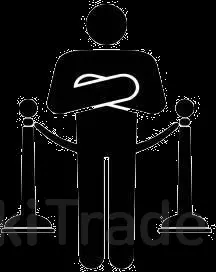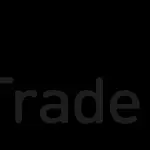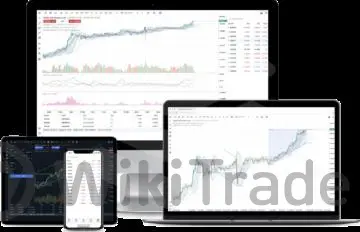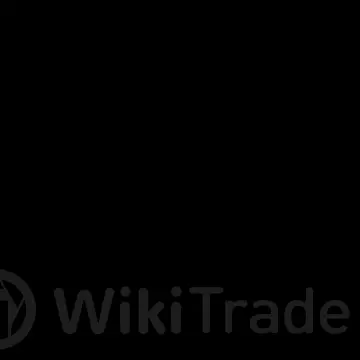Know Your Retail Forex History!
Abstract: Once upon a time, foreign exchange (FX) trading was a stuffy affair, reserved for professionals and institutional investors
Once upon a time, foreign exchange (FX) trading was a stuffy affair, reserved for professionals and institutional investors
But then a wave of technological advancements swept in, and today, the market is globally accessible to individual traders.
The evolution of retail forex trading is a fascinating journey!
Lets take a lighthearted tour through the history of retail FX trading and see how we got from pocket protectors to mobile apps and beyond!
The Early Days: When FX Trading Was a Members-Only Club
FX trading emerged in the groovy 1970s after the Bretton Woods system, which had pegged global currencies to the US dollar, was dismantled in 1971.
The resulting shift to a floating exchange rate system paved the way for increased currency speculation and the birth of the modern foreign exchange market.

Unfortunately, back then, FX trading was like an exclusive club, with trading accessible only to banks, hedge funds, and large corporations.
Individual traders lacked access to the necessary resources and technology to participate in the market.
Retail participation was virtually non-existent due to several barriers:
High Capital Requirements: Significant capital was needed to participate in the forex market, having it inaccessible to individual traders.
Limited Access: The lack of technological infrastructure meant that only institutions with direct access to interbank dealing could trade currencies.
Manual Processes: Trading was conducted over the phone or via telex, with no real-time price dissemination, having it cumbersome and slow.
In other words, too small and too poor.
The 1990s: Enter the Internet and a New Era of Retail FX Trading
Once the 1990s came along, thanks to computer nerds and the booming growth of the internet (cheers to you Mr. Al Gore), banks began creating their own trading platforms.
These platforms were designed to stream live quotes to their clients so that they could instantly execute trades themselves.
Meanwhile, some smart business-minded marketing machines introduced internet-based trading platforms for individual traders.
Known as “retail forex brokers”, these entities made it easy for individuals to trade by allowing smaller trade sizes.
Early adopters of online trading had to deal with slow internet speeds, unreliable connections, and rudimentary trading platforms. Yikes.
Unlike in the interbank market where the standard trade size is one million units (or more), retail brokers allowed individuals to trade position sizes of as little as 1,000 units!
No longer was the market a members-only club; individual traders were now invited to the party!
The 1990s witnessed a significant turning point for retail FX trading, as the rapid development of the internet and personal computers enabled individual traders to access the currency market.
As internet speeds increased, online trading platforms popped up like mushrooms after a rainstorm, providing retail traders with user-friendly interfaces and access to market data, news, and analysis.
The 2000s: The Explosion of Online Forex Brokers and Trading Platforms
The early 2000s marked a significant period of transformation for retail forex trading. There was an explosion of online brokers, each eager to offer retail FX trading services.

Many brokers provided demo accounts, allowing traders to practice trading with virtual money. This enabled new traders to learn and develop their skills without risking real capital.
They wooed individual traders with promises of trading platforms, educational resources, and access to leverage – because who doesnt love controlling larger positions with a smaller investment?
The increased competition among brokers led to tighter spreads, lower transaction costs, and an expansion of trading products beyond major currency pairs.
The emergence of online trading platforms with user-friendly interfaces. such as MetaTrader 4 (launched in 2005), provided retail traders with charting, technical analysis tools, and automated trading (via Expert Advisors).
Today, retail FX traders have access to a wide range of trading platforms, including MetaTrader 4 and 5, cTrader, and various proprietary platforms developed by individual brokers.
They even offer mobile apps so you can trade on your smartphone!

There‘s something for everyone, whether you’re a charting connoisseur, a technical indicator aficionado, or an automated trading enthusiast
The 2000s experienced significant geopolitical events and economic shifts, leading to increased market volatility. Events such as the dot-com bubble burst, 9/11 attacks, and the early stages of the global financial crisis impacted currency markets.
Regulatory Evolution and the Protection of Retail Traders
The growth of retail FX trading attracted the attention of financial regulators, who sought to protect individual traders from shady forex brokers and maintain market integrity.
The retail FX market was super shady back then! It was the Wild West!
Regulatory oversight forced brokers to adhere to higher standards of accountability and transparency.
They introduced strict rules and requirements for FX brokers, having sure they had enough capital, managed risk properly, and treated customers fairly.

It was like having a stern but loving parent watching over the market.
Prominent regulatory agencies in the retail FX industry include the US Commodity Futures Trading Commission (CFTC), the UK Financial Conduct Authority (FCA), the Australian Securities and Investments Commission (ASIC), and the European Securities and Markets Authority (ESMA).
These regulators have implemented measures such as leverage restrictions, negative balance protection, and mandatory segregation of customer funds to protect retail traders.
The 2010s: Maturation and Technological Advancements
The 2010s marked the maturation of the retail forex market, characterized by continued technological advancements and a more regulated environment:
Mobile Trading: The introduction of mobile trading apps allowed traders to monitor and execute trades on the go, further increasing accessibility and convenience.
Algorithmic Trading: Advances in algorithmic trading and high-frequency trading (HFT) technologies enabled retail traders to use automated strategies and sophisticated analysis tools.
Tighter Regulation: Regulators worldwide continued to implement stricter rules on forex brokers, including leverage limits, mandatory disclosures, KYC requirements, and eligibility criteria for new accounts.
The Present Day: A Highly Accessible Market
Today, retail forex trading is a highly accessible and dynamic market, characterized by:
Advanced Trading Platforms: Modern platforms offer a range of features, including social trading, copy trading, and integration with various financial instruments such as CFDs.
Diverse Market Participants: Retail traders from all walks of life participate in the forex market, benefiting from low transaction costs, tight spreads, and advanced analytical tools.
Global Community: Online communities, forums, and social media platforms allow traders to share insights, strategies, and market analysis, fostering a global trading community.
Summary
The history of retail FX trading is a colorful and exciting tale, filled with technological leaps, increasing accessibility, and ever-watchful regulatory guardians
From its humble beginnings in the 1970s to the present day, retail FX trading has transformed into a global phenomenon, offering individual traders the opportunity to participate in the worlds largest and most liquid financial market and trade alongside institutional giants.
As technology continues to advance and regulations adapt, the future of retail FX trading promises to be even more fun and accessible for traders around the world.




Top News
 WikiTrade
WikiTrade WikiTrade
WikiTrade WikiTrade
WikiTrade WikiTrade
WikiTrade WikiTrade
WikiTrade WikiTrade
WikiTrade WikiTrade
WikiTrade WikiTrade
WikiTrade WikiTrade
WikiTrade WikiTrade
WikiTrade


